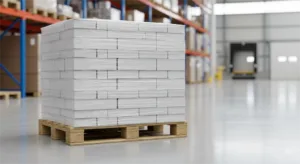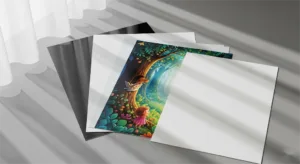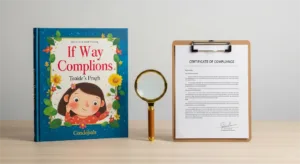Torn between paperback and hardcover? This in-depth guide breaks down the KEY differences, helping you choose the perfect format for reading AND publishing. Plus, discover insider tips to maximize your book’s success!
Hardcovers and paperbacks are the two main formats for printed books. Hardcovers have rigid covers and are more durable, while paperbacks have flexible covers and are lighter and more portable. Hardcovers are generally more expensive due to higher production costs. The best choice depends on factors like budget, reading habits, and the type of book.
- Hardcovers are more durable (but pricey!).
- Paperbacks are portable and budget-friendly.
- Authors: Cost analysis is KEY to smart publishing.
- Know your audience to choose the right format.
- Strategic marketing can make ANY book a hit.
Whether you’re a reader or a publisher, this guide has EVERYTHING you need to master the paperback vs. hardcover game!
Paperback vs. Hardcover: A Deep Dive into the Details
Okay, now that we’ve set the scene, let’s take a closer look at each format. You might be surprised by some of the nuances!
What is a Paperback Book?

You probably know these as “softcovers” too. Paperbacks are those flexible friends with a softer, often bendable cover. They’re typically glued together at the spine, and sometimes the pages are left untrimmed (which can give them a slightly raw, almost rebellious feel, don’t you think?).
And hey, have you ever noticed those smaller paperbacks, usually crammed into rotating racks at airports and drugstores? Those are called mass-market paperbacks. They’re like the pocket rockets of the book world – designed for ultimate portability. Back in the mid-20th century, they were the way to get your affordable reading fix on the go. They’re not quite as common these days with the rise of ebooks, but they still hold a special place in many readers’ hearts (and bags!).
What is a Hardcover Book?

Hardcovers, or hardbacks, are the sturdy, elegant siblings of paperbacks. They’re bound with stiff boards, often covered in cloth, leather, or other durable materials. These books are built to last, thanks to their sewn binding (which is way more robust than glue!).
And let’s not forget the dust jacket! That’s the removable paper cover that adds an extra layer of protection and often features eye-catching artwork. Think of it as the hardcover’s stylish coat. 😉
Key Differences: Paperback vs. Hardcover

Alright, let’s get down to the nitty-gritty! Here’s a breakdown of the key differences between these two book formats:
- Cost: The Price Tag Matters Let’s be real, the price is often the first thing we notice. And yes, hardcovers are almost always pricier than their paperback counterparts. Think of it like this: a brand new hardcover might set you back $25 or more (find out more about book printing cost), while the same book in paperback could be anywhere from $7 to $10. Why the big difference? Well, it all boils down to those fancy materials and the more complex production process involved in making a hardcover. Want to see a real-world cost comparison for your project? Get a free quote for both paperback and hardcover printing.
- Durability: Built to Last (or Not?) Hardcovers are the marathon runners of the book world. They’re designed to withstand the test of time (and maybe even a few accidental drops!). Their sturdy covers and sewn binding make them much less prone to bending, tearing, or getting dog-eared (we’ve all been there!).Paperbacks, on the other hand, are a bit more delicate. They might be perfect for tossing in your bag, but they’re also more likely to show wear and tear over time.[Image comparing a worn paperback to a well-kept hardcover]
- Portability: The Travel Companion Factor If you’re a bookworm on the move, portability is key. And that’s where paperbacks truly shine! They’re lightweight and easy to slip into your purse, backpack, or even your pocket. Hardcovers, while beautiful, can be a bit bulky and heavy, especially if you’re lugging them around all day.
- Paper Quality: A Tactile Experience Ever noticed how some books just feel better in your hands? That’s often due to the paper quality. Hardcovers often use thicker, higher-quality paper, sometimes even acid-free paper, which helps prevent yellowing and deterioration over time. This not only enhances the reading experience but also makes the book more durable.
- Aesthetics and Collectibility: The “Wow” Factor There’s something undeniably special about a beautiful hardcover book. They often have a more prestigious feel, making them perfect for display on your bookshelf or as a thoughtful gift. And for serious book collectors, first editions or limited edition hardcovers can become prized possessions!
So, which format reigns supreme? Well, that depends entirely on your needs and priorities! Let’s explore that next.
So, Which is Better: Paperback or Hardcover?
Ah, the million-dollar question! Sadly, there’s no single “right” answer. The best choice really depends on you – your needs, your preferences, and even your reading style.
To help you decide, let’s weigh some key factors:
Factors to Consider When Choosing a Book Format
Budget: The Cost of Reading Pleasure We’ve already talked about the price difference, but it’s worth repeating: hardcovers are going to put a bigger dent in your wallet. If you’re on a tight budget, paperbacks are the obvious winner. But hey, sometimes that special hardcover edition is just too tempting to resist, right? It all comes down to how much you value the book and the reading experience.Pro Tip: If you’re looking to save some cash, check out used bookstores or your local library. You can often find great deals on both hardcovers and paperbacks!
- Reading Habits: How Do You Read? Are you a frequent traveler who loves to have a book by your side? Then lightweight, portable paperbacks might be your best bet. On the other hand, if you’re a collector who loves to display your literary treasures, hardcovers are the way to go. And if you’re just a casual reader who enjoys a good story, well, it’s all about personal preference!
- Book Type: Genre Matters Believe it or not, the type of book you’re buying can also influence your decision. For textbooks, you might want to weigh durability (hardcover) against cost (paperback). If you’re buying a coffee table book or an art book with lots of visuals, a hardcover is usually the preferred choice. And for novels? Well, the world is your oyster!
- Portability: On-the-Go Reading Do you commute by train or bus? Are you planning a long flight? If you’re going to be carrying your book around, a paperback will be much easier on your shoulders (and your bag!).
- Personal Preference: The Feel-Good Factor At the end of the day, sometimes it just comes down to what feels right. Some people love the heft and solidity of a hardcover, while others prefer the flexibility and ease of a paperback. There’s no wrong answer!
So, take a moment to consider your own needs and preferences. What kind of reader are you? What kind of book are you looking for? The answers to these questions will guide you towards the perfect format.
Special Considerations for Authors and Publishers
Table: Comparison of Paperback and Hardcover Books
| Attribute | Paperback | Hardcover |
|---|---|---|
| Cost | Typically cheaper, ranging from $7 to $10 for a new book. | Usually more expensive, starting at $25 or more for a new book. |
| Durability | Less durable; more prone to bending, tearing, and dog-earing. | More durable; designed to withstand the test of time and accidental drops. |
| Portability | Lightweight and easy to carry; ideal for on-the-go reading. | Bulky and heavy; less convenient for carrying around all day. |
| Paper Quality | Thinner paper; may not be acid-free, which can lead to yellowing. | Thicker, higher-quality paper; often acid-free to prevent deterioration. |
| Aesthetics | Flexible covers; a more casual and budget-friendly look. | Rigid covers, often covered in cloth or leather; a more prestigious feel. |
| Collectibility | Less common for collectors due to lower perceived value. | Often sought after by collectors; first editions can be prized possessions. |
| Market Performance | Performs well for genres like thrillers and romance. | Performs well for genres like biographies and cookbooks. |
| Release Timing | Often released 6 months to a year after the hardcover. | Released first to capitalize on higher initial sales. |
| Preferred for | Great for budget-conscious readers and those who read frequently. | Ideal for collectors, gift-giving, and readers who value high-quality physical books. |
Now, let’s shift gears a bit and talk about the folks behind the books: the authors and publishers. If you’re thinking about publishing your own work (or someone else’s), understanding the ins and outs of paperback vs. hardcover becomes even more crucial.
Understanding Production Costs: Where Does the Money Go?

As an author or publisher, one of your primary concerns is likely to be cost. After all, you want to make sure your book is profitable! So, let’s delve into the financial side of things:
1. Detailed Cost Breakdown: Unmasking the Expenses
When it comes to publishing a book, there are a lot of hidden costs lurking beneath the surface. Here’s a glimpse into the expenses that contribute to the final price tag:
- Cover materials: This is a big one! Hardcover books often use more expensive materials like cloth or leather, while paperbacks typically use less costly paperboard.
- Paper type and weight: Thicker, higher-quality paper (often used in hardcovers) costs more.
- Printing: Color printing is generally more expensive than black and white.
- Binding methods: Sewn binding (common in hardcovers) is more labor-intensive and therefore pricier than the glue used for paperbacks.
- Design, typesetting, and shipping: Don’t forget about these essential services!
2. Cost Calculation Tools/Examples: Crunching the Numbers
Wouldn’t it be great if there was a magic formula to calculate the exact cost of publishing your book? While there’s no one-size-fits-all solution, there are tools and resources that can help you estimate the expenses involved.
For example, some printing companies offer online calculators that allow you to input your book’s specifications (page count, trim size, binding type, etc.) and get an instant cost estimate. You can also learn more about factors that affect cost in our guide to offset vs digital printing.
Case Study Example: Let’s say you’re publishing a 300-page novel. You could use a cost calculator to compare the expenses of printing 1,000 copies in hardcover vs. paperback, factoring in different paper types and binding options. This will give you a clearer picture of the potential profit margins for each format.
Analyzing Market Demand and Reader Psychology: Know Your Audience
Beyond the numbers, it’s essential to understand the market forces at play. What are readers looking for? What are the current trends? Let’s explore:
1. Market Performance by Genre: Fiction vs. Non-Fiction
Different genres tend to perform differently in the paperback and hardcover markets. For instance, thrillers and romance novels often sell well in paperback, while biographies and cookbooks might see strong initial sales in hardcover.
Example: Imagine you’re publishing a historical fiction novel. Researching the sales trends for similar books can give you valuable insights into which format might be more successful.
2. Target Audience Analysis: Who Are You Writing For?
Understanding your target audience is crucial. Are you writing for young adults, busy professionals, or avid collectors? Consider their age, income, reading habits, and preferences.
Example: If your target audience is primarily students or budget-conscious readers, a paperback edition might be more appealing.
3. Market Trends: Staying Ahead of the Curve
The publishing industry is constantly evolving. Ebooks have undoubtedly impacted the market, but print books (especially paperbacks) remain incredibly popular, with a resurgence in print book sales reported by Color House Graphics, Inc. It’s important to stay informed about current trends and adapt your publishing strategy accordingly.
Example: The rise of print-on-demand services has made it easier for authors to offer both paperback and hardcover editions without having to worry about large print runs and inventory management.
Publishing Strategy Recommendations: Putting it All Together
Now, let’s bring it all together and explore some strategic considerations for authors and publishers:
1. Format Selection: Making the Right Choice
Choosing the right format for your book can be a game-changer. Consider the following:
- Book type: Is it a novel, a textbook, a coffee table book?
- Target audience: Who are you trying to reach?
- Budget: What are your financial constraints?
Example: For a literary novel aimed at collectors, a limited hardcover edition followed by a wider paperback release could be a winning strategy.
2. Pricing Strategies: Finding the Sweet Spot
Pricing your book strategically is essential for maximizing profit. Consider offering different price points for different formats.
Example: You could price the hardcover edition higher to appeal to collectors and early adopters, then release a more affordable paperback edition later on.
3. Marketing and Promotion: Spreading the Word
Don’t forget about marketing! Tailor your promotional efforts to the specific format you’re selling.
Example: For hardcovers, emphasize their collectibility, limited edition status, and high-quality production. For paperbacks, highlight their affordability, portability, and accessibility.
FAQs: Answering Your Burning Questions

Now, let’s tackle some of those frequently asked questions that might be swirling around in your head.
- Is it Worth Buying Hardcover Books?
Ah, the eternal debate! Honestly, it depends. Hardcovers are generally more expensive, but they offer that undeniable “wow” factor. They’re often more durable, making them a good investment if you plan on rereading the book or adding it to your collection. But if you’re on a budget or prefer lighter books, paperbacks are perfectly fine! - Does Hardcover or Paperback Last Longer?
Hands down, hardcovers win this round! Their sturdy construction and sewn binding make them much more resilient to wear and tear. But hey, with proper care, even a paperback can last a lifetime. - Why are Hardcovers More Expensive?
Remember that detailed cost breakdown we discussed earlier? Hardcovers simply involve more expensive materials and a more complex production process. That cost gets passed on to the consumer. - Do Paperback or Hardcover Sell More?
Historically, paperbacks have outsold hardcovers. They’re more affordable and accessible, making them a popular choice for many readers. However, hardcovers still hold their own, especially for certain genres and among collectors. - Is Hardcover or Paperback Better?
The age-old question! Ultimately, there’s no definitive answer. It truly depends on your personal preferences, reading habits, and the type of book you’re looking for. Both formats have their pros and cons, so weigh your options and choose what feels right for you!
Wrapping Up: The End of Our Bookish Journey
Well, there you have it! We’ve explored the wonderful world of paperback and hardcover books, delving into their differences, weighing their pros and cons, and even taking a peek behind the scenes at the publishing process.
Remember those PrintingCenterUSA case studies? They highlight how different needs and preferences lead to different book format choices. Paul, who wanted to preserve his family history, opted for an economical paperback. Elizabeth, seeking a unique and high-quality feel, chose a customized option between hardcover and paperback. It just goes to show that there’s a perfect format out there for everyone!
Whether you’re a passionate reader, an aspiring author, or a seasoned publisher, I hope this post has shed some light on the paperback vs. hardcover debate. Ultimately, the best choice depends on your individual needs and priorities.
So, the next time you’re faced with that “paperback or hardcover?” dilemma, remember the factors we’ve discussed, trust your instincts, and choose the format that speaks to you. Happy reading!
Resources
- Print Hardcover Book Cost: This resource explores the breakdown of costs associated with printing hardcover books.
- How to Print a Hardcover Book: A comprehensive guide on the process of printing hardcover books.
- Hardcover vs Softcover: This comprehensive guide dives into the key differences between hardcover and softcover formats, helping you decide which one is best for your book.
- What is a Hardcover Book?: This resource delves deeper into the technical aspects and specifications of hardcover books.







